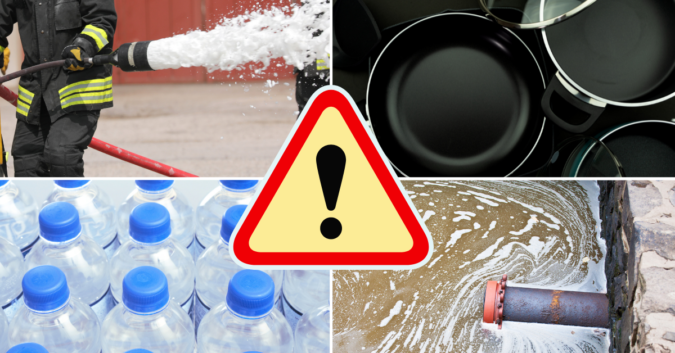In a major move, the Biden Administration announced it will soon be requiring chemical manufacturers to make publicly available information regarding the amount of PFAS present in the products they sell to American consumers.
Such products are wide-ranging and include things like non-stick pots and pans, tape, stain-resistant fabrics, and dozens of other household items. The move marks a renewed effort toward addressing concerns of cancer-causing per- and polyfluoroalkyl substances (dubbed “PFAS,” for short) leaching into drinking water.
In partnership with the White House, the U.S. Environmental Protection Agency (EPA) released its “PFAS Roadmap,” which outlines the agency’s plans for “concrete” action on PFAS over the next 3 years, including efforts to “control PFAS at their sources, hold polluters accountable, ensure science-based decision making, and address the impacts on disadvantaged communities.”
In a memo discussing the plans, the Biden-Harris Administration wrote:
“To safeguard public health and protect the environment, the efforts being announced today will help prevent PFAS from being released into the air, drinking systems, and food supply, and the actions will expand cleanup efforts to remediate the impacts of these harmful pollutants.”
The White House’s announcement marks the first full-government effort by the new administration to address PFAS since the 2019 PFAS Action Plan developed under former President Trump.
How Dangerous Are PFAS?
Originally developed in the 1960s, PFAS are now exceedingly common and can be found in a wide range of consumer products due to their ability to resist heat, stains, water, and grease. For decades, PFAS have also been a primary ingredient in certain kinds of firefighting foam, also known as AFFF (aqueous film-forming foam).
PFAS-containing firefighting foam is specifically used to fight high-intensity “Class B” fires — fires that involve gasoline, oil, petroleum, or jet fuel. AFFF works by cutting off the fire’s oxygen supply — effectively smothering it.
While AFFF has proven to be effective in extinguishing such fires, the cost to the environment and human health arguably far outweigh the foam’s benefits.
PFAS are nicknamed “forever chemicals” because they are highly durable and do not break down naturally over time. Instead, they persist in trace amounts within the environment and inside of the human body.
Major U.S. health organizations, including the Centers for Disease Control and Prevention (CDC), the EPA, and the American Cancer Society (ACS), have noted that certain PFAS chemicals may be linked to an increased risk of cancer and other health problems.
Firefighters Face Outsized Cancer Risks
Perhaps no one is at greater risk of PFAS-related cancer than airport and military firefighters, who were for many years required to use AFFF as part of their jobs. The PFAS chemicals in AFFF may cause various types of cancer in firefighters who were regularly exposed to it.
PFAS-based firefighting foam exposure may cause firefighters to develop multiple types of PFAS cancer, including:
- Renal or kidney cancer
- Testicular cancer
- Pancreatic cancer
- Bladder cancer
- Leukemia
- Lymphoma
- Prostate cancer
- Liver cancer
- Breast cancer
- Colorectal cancer (colon and/or rectal cancer)
- Thyroid cancer
Many individuals who have developed PFAS-related cancer are now taking legal action against the manufacturers of firefighting foam, seeking justice and financial compensation for their injuries.
The U.S.’s Plan to Tackle PFAS
The EPA’s PFAS Roadmap outlines the agency’s plans through 2024 to research, restrict the use of, and remediate the harm that PFAS have done to the environment.
Highlights from the proposal include:
- Implementation of a new national testing strategy that will accelerate research and regulation of PFAS
- Utilization of the Comprehensive Environmental Response, Compensation, and Liability Act (CERCLA) to designate certain PFAS as hazardous substances
- Acceleration of the cleanup of PFAS in the environment
- Development and enforcement of a limit for PFAS in safe drinking water
In partnership with the EPA, the Dept. of Defense (DOD), the Food and Drug Administration (FDA), the Dept. of Agriculture (USDA), the Dept. of Homeland Security (DHS), and the Dept. of Homeland Security (DHHS) will all play vital roles in studying, surveying, and reporting on PFAS.
According to the White House’s announcement, both the Bipartisan Infrastructure Deal and the Build Back Better Agenda — which are currently being considered in Congress — include roughly $10 Billion in funding that would also be earmarked to address PFAS contamination specifically.
